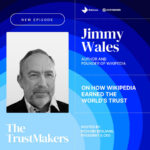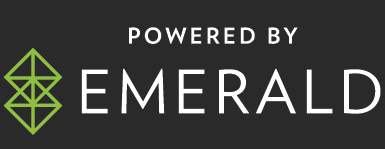By Emmanuel Josserand, Senior Director, Brand, Agency and Industry Relations, Comcast Advertising
The autumn season traditionally means a slew of new programming and video content for consumers to enjoy. And in this digital age, streaming services will provide much of that content, attracting a significant number of viewers globally as a result. In the UK alone, more than one-third of viewers now watch two or more hours of streaming content per day.
The abundance of video content on offer and channels available across a variety of platforms has enabled more flexible viewing habits, with streamers able to easily switch between programming. While this is great news for audiences, for advertisers, grabbing attention in a crowded landscape can become a serious challenge.
But within every challenge lies an opportunity, and a host of innovative advertising formats enabled by CTV and streaming platforms have been created, offering advertisers the chance to reach audiences and build engagement. New research from the FreeWheel Viewer Experience Lab has lifted the lid on these latest ad innovations, uncovering telling insights about what formats better resonate with consumers.
The new formats explained
For now, standard 30-second ads remain the foundation of most campaigns running on TV and streaming platforms. But there are several new formats becoming more commonly seen by audiences around the world.
Firstly, there are ads shown when content is idle. These can be broken down into two types: pause ads and native ads. Pause ads – as the name suggests – are shown when the viewer presses pause on its remote control, and native ads appear on the home screen as the viewer searches for something to watch – which often takes several minutes. These ads reach viewers without increasing ad break lengths, making them a win-win for both sides.
When it comes to ads shown during content, innovations include frame ads – which appear on a portion of the screen, often in the form of an L-shape – and lower-third ads, which appear at the bottom of the screen.
Then there are new ad formats which appear in the traditional ad breaks during or between programming that aim to extend viewer entertainment. These include interactive ads, which may include a trivia quiz or game that can be played with the remote control. Shoppable ads can also be activated through the remote or via a QR code, which viewers can scan using their smartphone to access product information and purchasing options.
Which of these formats you will have seen – and how often – depends on where you live. FreeWheel’s research shows different levels of adoption in different geographies; with native ads most commonly seen in Europe by 56% of viewers, and shoppable ads more widely used in the US (66%)
Everything in its place
To get the most from these new formats, advertisers need to carefully consider how, where and when to use them for maximum impact. The research shows that ad formats displayed when content is idle are best received by audiences. Pause ads (58%) and native ads (56%) were perceived to fit in seamlessly with content by a majority of European respondents. This points to opportunities for advertisers to capture viewers’ attention when they are not fully absorbed in the programming itself.
When carefully managed, formats like frame ads and lower-third ads are perceived to better preserve the content flow. When overlaid with sports and other live content, for example, these ad formats can be a more natural fit because they ensure the viewer doesn’t miss any action, imitating on-screen scoreboards or captions.
Interactive ads have the potential to capture audience imagination and action. The report reveals that viewers in all regions, are 80% more likely to seek information online after seeing a shoppable ad compared with seeing the same brand’s standard mid-roll ad. So, while viewers may not always scan or shop with their remote immediately, shoppable ads have the potential to increase the chances of them researching the brand in the moment or later.
Maintaining novelty value
Advertisers need to avoid over-exposure to innovative ad formats. After all, pop-up ads on websites were considered novel at one time, but very quickly became an annoyance. While advertisers should absolutely be experimenting with these new formats, they must avoid audience indifference caused by saturation.
Novelty wears off with frequency. While the research found shoppable ads are considered more cutting-edge and innovative compared to the standard 30-second mid-roll ads, as US viewers saw more of this same format, perceptions changed.
Too many innovative ad formats in a stream may harm the viewer experience; the research shows that more than one innovative ad format per programme can result in an intrusive ad environment, ultimately impacting engagement and perception.
More than three innovative ad formats in a show increased intrusiveness by 14%, compared to no innovative ad formats. Content engagement drops by 7% when five innovative ads are shown compared to no innovative ads at all.
Maximising new ad formats: think quantity, quality and relevance
Innovative ad formats are an opportunity for advertisers to get their message across in new ways, and to avoid disrupting programming as a typical ad break might.
But advertisers must be aware that the quantity, quality, and relevance of the ad experience matter. Limiting the number of new ad formats within breaks can preserve the viewer experience and the novelty of the format.
Finally, it is important to consider the context for how and where these ad formats appear. By working with quality partners that can create and enable ads that maximise the impact of the formats, brands can get themselves noticed by audiences generating a novelty effect, without causing irritation.








